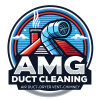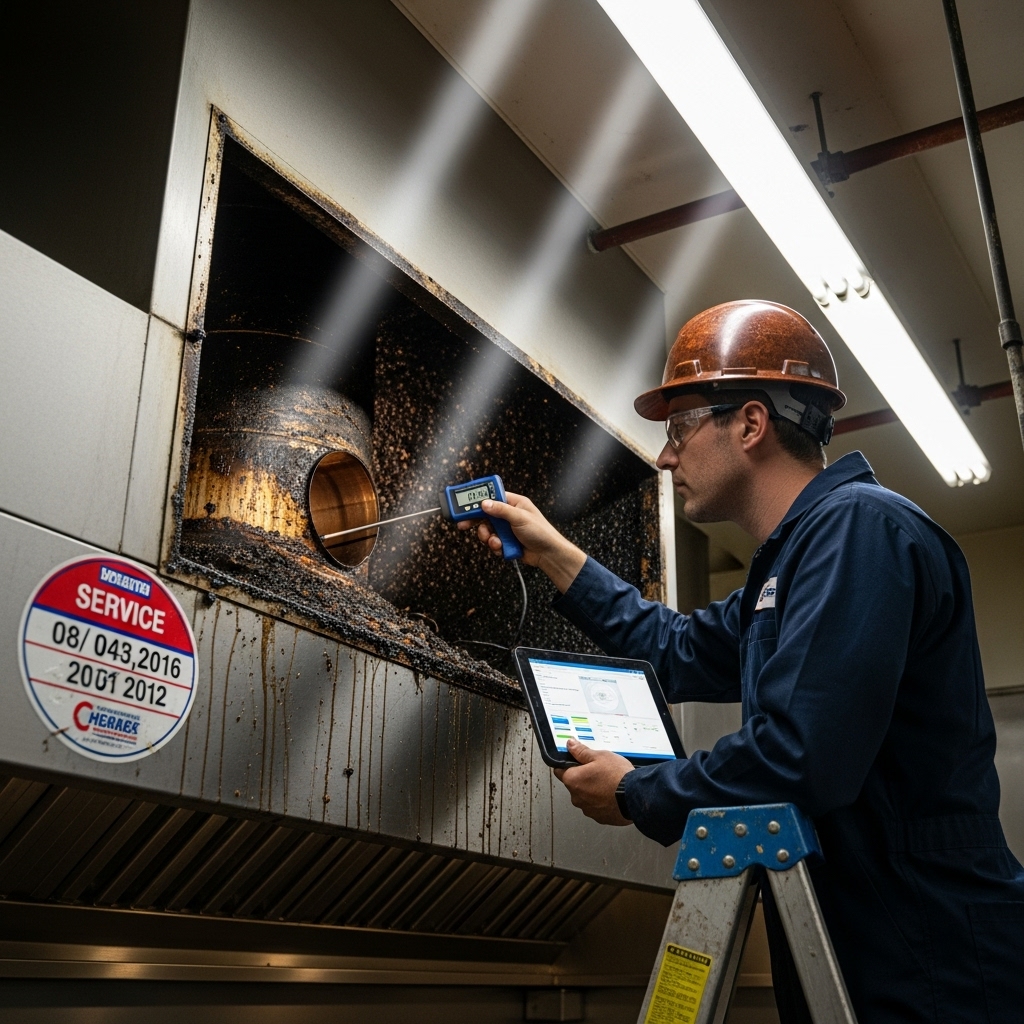Understanding Kitchen Exhaust Hood Cleaning Requirements in Somerville, New Jersey
Every commercial kitchen in Somerville must balance culinary ambition with strict safety and health obligations. Central to those obligations is maintaining clean hoods, ducts, and exhaust fans. Grease accumulation is both highly flammable and a source of indoor air degradation, and regulators expect operators to control it proactively. This guide clarifies common cleaning requirements, documentation expectations, and practical steps to align your operation with inspection standards. If you are establishing or revising a maintenance program, start by partnering with a specialist in kitchen exhaust hood cleaning so the system is serviced thoroughly and your records support compliance.
While codes and enforcement practices evolve, the fundamentals remain consistent: clean to reduce fire risk, maintain airflow for occupant comfort and health, and document everything. Inspectors in Somerville, including fire officials and health department representatives, look for evidence that your program is systematic, risk-based, and executed by trained personnel or reputable contractors. Frequency, scope, and proof of performance are crucial.
Core Regulatory Principles
Requirements generally emphasize three pillars. First, frequency must reflect cooking volume and methods; higher grease output demands more frequent service. Second, the scope must cover the entire grease exhaust path—hood, plenum, filters, ducts, and rooftop fans—because uncleaned sections still pose a fire path. Third, documentation must verify what was cleaned, when, by whom, and with what results. Service stickers and written reports are essential inspection tools.
Somerville’s building stock includes older structures and multi-tenant spaces where shared shafts or roof areas complicate access. Regulators recognize these constraints but still expect operators to secure proper access and ensure thorough cleaning. Where access is insufficient, additional panels or hardware may be required. Failure to address unreachable sections can lead to violations, particularly if grease thickness indicates extended neglect.
Determining Cleaning Frequency
Frequency is typically defined by cooking type and volume. High-heat, high-grease operations such as charbroiling, frying, and wok cooking often warrant monthly or quarterly cleanings. Medium-volume kitchens may be quarterly to semiannual, and light-duty operations may qualify for semiannual or annual schedules. Seasonal influences in Somerville—such as summer patio service or holiday peaks—can warrant temporary escalation in frequency. Keep a simple production log to document volume surges that justify interim cleanings.
Alternatively, grease thickness measurements can inform frequency decisions. If inspection reveals accelerated accumulation before the next scheduled service, move the interval forward. Align internal filter-cleaning routines with professional deep cleaning: regular filter care slows system contamination and helps inspection outcomes.
Scope of Work: What Must Be Cleaned
A compliant scope includes hood interiors, baffle filters, plenums, accessible ducts, and rooftop fans. Operators should expect degreasing, scraping of heavy deposits, controlled-pressure rinsing, and detailed finishing that leaves surfaces free of flammable residue. Rooftop equipment requires special attention, including blade and shroud cleaning, hinge function checks, and proper reassembly. System components like access panels must be opened and resealed correctly to prevent leaks and ensure the next service can reach critical areas.
Documentation should list the exact sections cleaned, any inaccessible areas with reasons, and recommendations for remediation—such as installing new access panels or replacing warped filters. Over time, your documentation should show that previously inaccessible areas were addressed when possible.
Documentation and Inspection Expectations
After each service, insist on a report containing date and time, crew identifiers, methods, observed grease levels, before-and-after photos, and any recommended repairs. Service stickers should be applied at the hood and rooftop fan, showing the last service date and the next recommended interval. Keep records organized and readily available for inspectors. In multi-unit properties, ensure your reports clearly identify which hood and duct system corresponds to your tenancy to avoid confusion during shared inspections.
Internal logs matter as well. Record weekly filter cleaning, any persistent odors, smoke behavior during peak periods, and unusual fan noises. This log supports professional recommendations and demonstrates a culture of preventive maintenance. When inspectors see consistent internal checks paired with professional reports, they gain confidence in your program’s reliability.
Addressing Access and Hardware Requirements
Older buildings may lack adequate access panels along horizontal duct runs, making thorough cleaning difficult. Inspectors can require the installation of access panels that meet fire and structural standards, positioned at intervals appropriate to your duct configuration. Fan hinge kits are often necessary to open rooftop fans safely for cleaning and inspection. Additionally, drain paths and grease containment on the roof should be maintained to prevent environmental discharge and roofing damage.
Operators should proactively assess whether their system hardware supports safe, efficient cleaning. If panels are missing or too small, or if hinges are damaged, schedule upgrades. Doing so reduces labor time during each service, improves results, and demonstrates a commitment to safety.
Training and In-House Maintenance
Staff responsibilities typically include regular filter cleaning and wiping visible hood surfaces between professional services. Provide clear instructions, approved degreasers, and protective equipment. Supervisors should learn to recognize early warning signs: smoke escaping the hood edge during peak service, strong odors that linger after closing, and fan noise or vibration that suggests belt or bearing issues. Empowering staff to report and log these observations supports timely professional intervention.
A short refresher training every few months keeps procedures consistent across staff turnover. Consider pairing a professional service visit with an on-site coaching session so your team can see best practices for filter handling and safe startup/shutdown protocols after cleaning.
Somerville-Specific Considerations
Rooftop access can be a practical challenge in some parts of Somerville, particularly in older or multi-tenant buildings. Coordinate with property managers for keys, elevator usage, and safety requirements. Winter weather introduces cold-related risks such as freezing rinse lines; choose providers who plan containment accordingly and protect roofing materials. Your documentation should reflect any site limitations and the steps taken to mitigate them.
Local inspectors expect not only clean metal but also verifiable processes. Reports that include photographs, notes on inaccessible areas, and proposed corrective actions show that you are actively managing risk rather than passively reacting. This proactive posture supports favorable inspection outcomes.
Common Pitfalls that Lead to Violations
One common pitfall is cosmetic cleaning that ignores the plenum or ductwork. Another is deferring service after a menu change that increases grease production. Inadequate filter maintenance accelerates buildup and can quickly overwhelm ducts. Some operators overlook rooftop fans, where neglected grease trays overflow and contaminate roofing. Finally, failing to update service stickers and maintain organized reports frustrates inspectors and undermines trust.
To avoid these issues, commit to a repeatable schedule, maintain internal logs, and act promptly on contractor recommendations. If your documentation reveals recurring access challenges, invest in hardware upgrades before your next inspection to demonstrate progress.
Frequently Asked Questions
Q: Who determines cleaning frequency? A: Operators set frequency based on volume and methods, often guided by professional assessments and inspector feedback. Documentation should justify your chosen interval and reflect adjustments as conditions change.
Q: What constitutes a complete cleaning? A: A complete cleaning addresses hood interiors, filters, plenums, accessible ducts, and rooftop fans with degreasing, rinsing, and detailing that removes flammable residue. Reports should clarify exactly what was cleaned and any limitations.
Q: How important are service stickers? A: Stickers provide quick, visible confirmation of recent service and the next recommended date. Inspectors rely on them alongside written reports and internal logs.
Q: Can my staff handle everything? A: Staff should handle routine filter cleaning and surface wipe-downs. However, internal ducts and fans require specialized tools, chemicals, and safety measures best left to professionals.
Q: What if my property restricts roof access? A: Coordinate with building management to schedule after-hours access and confirm safety protocols. Where access is insufficient, you may need to add hinges or panels to enable thorough cleaning.
Q: How do I prepare for an inspection? A: Keep a tidy kitchen, ensure visible surfaces are clean, maintain updated stickers, and store reports where inspectors can review them quickly. Assign a point person who understands the system layout and documentation.
Building a Sustainable Program
An effective program integrates professional deep cleaning, internal filter routines, hardware upgrades as needed, and accurate documentation. Schedule services to align with production rhythms and seasonal peaks. Track observations in a simple log, and review contractor reports for trends that suggest equipment adjustments or frequency changes. Your goal is not just passing inspections but maintaining a safer, more efficient kitchen every day.
Proactive communication with your provider helps anticipate challenges such as new menu items or equipment additions that increase grease output. Together, you can adjust intervals and ensure access points support thorough service. Over time, a well-managed program reduces surprises, controls risk, and supports consistent culinary performance.
Get Aligned with Local Expectations
If you are launching a new concept, expanding your line, or recovering from a previous violation, now is the time to standardize your approach. Build a plan that pairs clear staff responsibilities with professional service and transparent documentation. For tailored guidance on frequency, scope, and reporting, connect with proven experts in exhaust hood cleaning who understand Somerville’s inspection landscape and building conditions.
Schedule Service with Confidence
Protect your people, property, and reputation by meeting and exceeding cleaning requirements. Keep reports current, train staff on early warning signs, and resolve access limitations before they become violations. When you are ready to reinforce safety, airflow, and compliance, schedule your next visit with a local team that prioritizes thoroughness and clear documentation. Book professional kitchen exhaust hood cleaning services and move forward with confidence.

